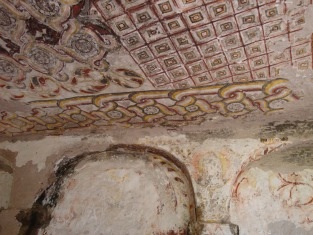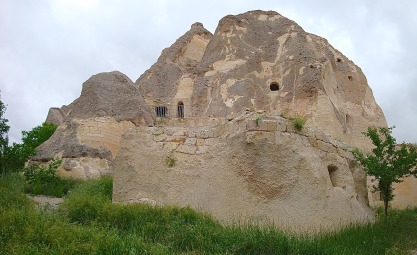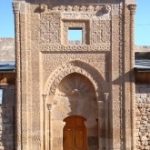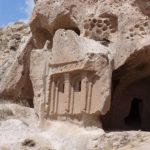The Monastery of the Archangel
If you’re driving south from Ürgüp or Mustafapaşa to Soğanlı you will drive past the hamlet of Cemil after which a signpost indicates the entrance to the Keşlik Monastery complex on the righthand side of the road.
Keşlik is one of Cappadocia’s least obvious cave-cut structures. Tucked away just off the road, it occupies a collection of rocky outcrops surrounded by a lush green garden full of squash and potato plants and stringy onions. Before signs were posted to attract visitors, most people would have whisked straight past the entrance and never guessed what they were missing. Today a cobbled track comes to a stop just beside a çeşme (fountain) and a pond that looks as if it’s strayed from England where visitors are greeted by Cabir Coşkuner, the jovial caretaker, and his wife and mother.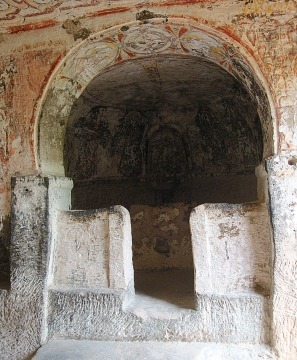
Heart of the monastery is the soot-blackened church of St. Michael, a structure that, more than most of the Cappadocian churches, makes do with what nature gave it. A double-apse at the far end is clearly man-made. Otherwise the 13th and 14th-century frescoes have been painted straight onto rough-hewn cave walls and ceilings rather as they are at the back of Sümela Monastery, near Trabzon.
After the population exchange of 1924 the church was clearly used for other purposes, and guides point out the paintings just about visible through the thick layer of soot from cooking stoves that now covers them.
At the back of the church a low door leads into what seems to have been an early version of a panic room. Here the monks would have been able to hole up behind a huge stone rolled across the entrance and spy on encroaching enemies through a hole in its centre.
St. Michael’s is the largest of three churches on the site. To find the other two you follow a path that wends its way through the garden, bypassing rock-cut homesteads equipped in at least one case with a fireplace as solid as anything you’d find in a Göreme cave-house.
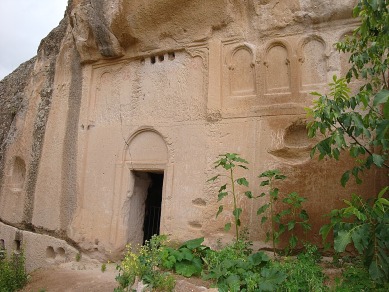 A line of blind arcading on its facade gives away the location of the church of St Gabriel; inside, it drops away steeply to the floor below.
A line of blind arcading on its facade gives away the location of the church of St Gabriel; inside, it drops away steeply to the floor below.
Round a bend the church of St. Stephen is more obviously church like, its walls and ceiling squared off to provide flat canvases for geometric designs thought to date back to the eighth-century Iconoclastic period, making them several hundred years older than those in St. Michael’s and some of the oldest frescoes in Cappadocia.
Keşlik holds one more ace up its sleeve and that is a long, thin refectory divided into two parts by a stone screen. To the left of the screen the rock-cut dining table and bench seats survive in superb condition while to the right the table has been worn almost flat, probably because locals reused the room to stable their animals whose mangers line the walls.
The frescoes of St. Michael’s are not only soot-blackened but also disfigured by graffiti. By the light of a torch it’s possible to see that many of the names etched into the walls are those of Greeks who visited in the late 19th century, a time when nearby Mustafapaşa was something of a boom town.
Sleeping
The nearest town with a good choice of places to stay is Mustafapaşa.
Transport info
Without your own car you are most likely to be able to visit this complex on a tour heading to Soğanlı.
